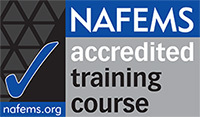Why do polymers have rate-dependent behavior?
How can you capture this behavior with modern test methods?
What models are available in FE codes, and how can I find the parameters for my test data?
Testing and Modeling of Polymers for Solid Mechanics Simulations
Advanced and accurate modeling of time- and temperature-dependent response of thermoplastics, elastomers, TPEs, composites, and foams.
Modern solid mechanics FE codes have built-in, advanced material models that can capture the complex behavior of polymers, including rate-dependent yield, plasticity, creep, stress-relaxation, and anisotropy. Designing your part without taking these into account can lead to extra iterations in the design cycle, field failures, or overdesign, resulting in greater financial manufacturing costs.
Using advanced, modern test methods can enable simulation and test engineers to capture all these complex material effects, but measuring the mechanical behavior is the first step. Using your data to select and calibrate a material model will enable engineers to predict potential failures earlier in the design.
On this four-session online course, you’ll learn how to design a test plan, how to capture the test plan, and then calibrate your material model. You’ll then see the power of these models in your simulations to enable more accurate FE simulations. We’ll cover the behavior of all polymers, including elastomers, TPEs/TPVs/TPUs, thermoplastic and thermosets, fluoropolymers, adhesives, and composites. We’ll discuss hyperelastic material models, linear and non-linear viscoelastic models, and non-linear viscoplastic material models, including when to use each one.
Who should attend?
Anyone with some experience in FE modeling and some knowledge of polymers.
Experience with a solid mechanics FE program will help, though examples will be code-independent. Prior knowledge of material models will help as well. No experience with material testing is required.
What will you learn?
The key takeaways from this class are:
- Identify the differences between hyperelastic, viscoelastic, plastic, and viscoplastic material models.
- Design a test plan for polymer materials (thermoplastics, thermosets, elastomers, TPE/TPU/TPVs, composites, biomaterials, fluoropolymers, foams, etc.).
- Select an appropriate material model for calibration.
- Understand how to calibrate a material model to your test data.
- Understand material model validation and its importance.
Why an E-Learning class?
Travel and training budgets are always tight! The e-Learning course has been developed to help you meet your training needs.
If your company has a group of engineers or specific training requirements across any subjects, please contact us to discuss options.
Course Content
- Motivation and Polymer Behavior
- Rate Dependence
- Viscoelasticity
- Temperature Dependence
- Polymer Testing
- DIC Study
- Toe-in Correction
- Validation Testing
- Testing for Rate Dependence
- Temperature dependence
- Continuum Mechanics
- Deformation gradient and strain measures
- Strain energy density definitions
- Stress from strain energy density Material Models
- Hyperelasticity
- Viscoelasticity
- Non-linear Viscoplasticity
- Designing a Test Plan





